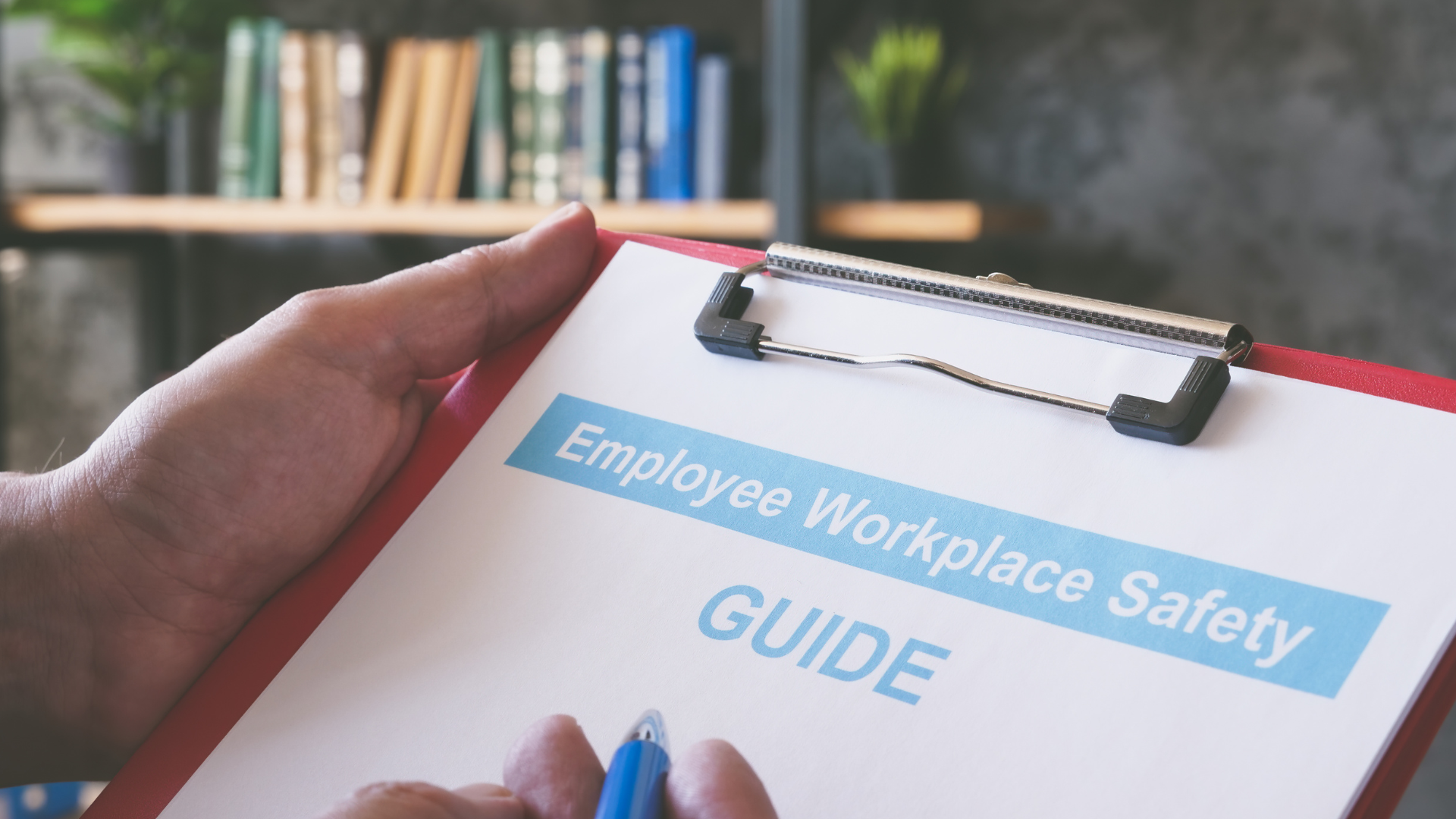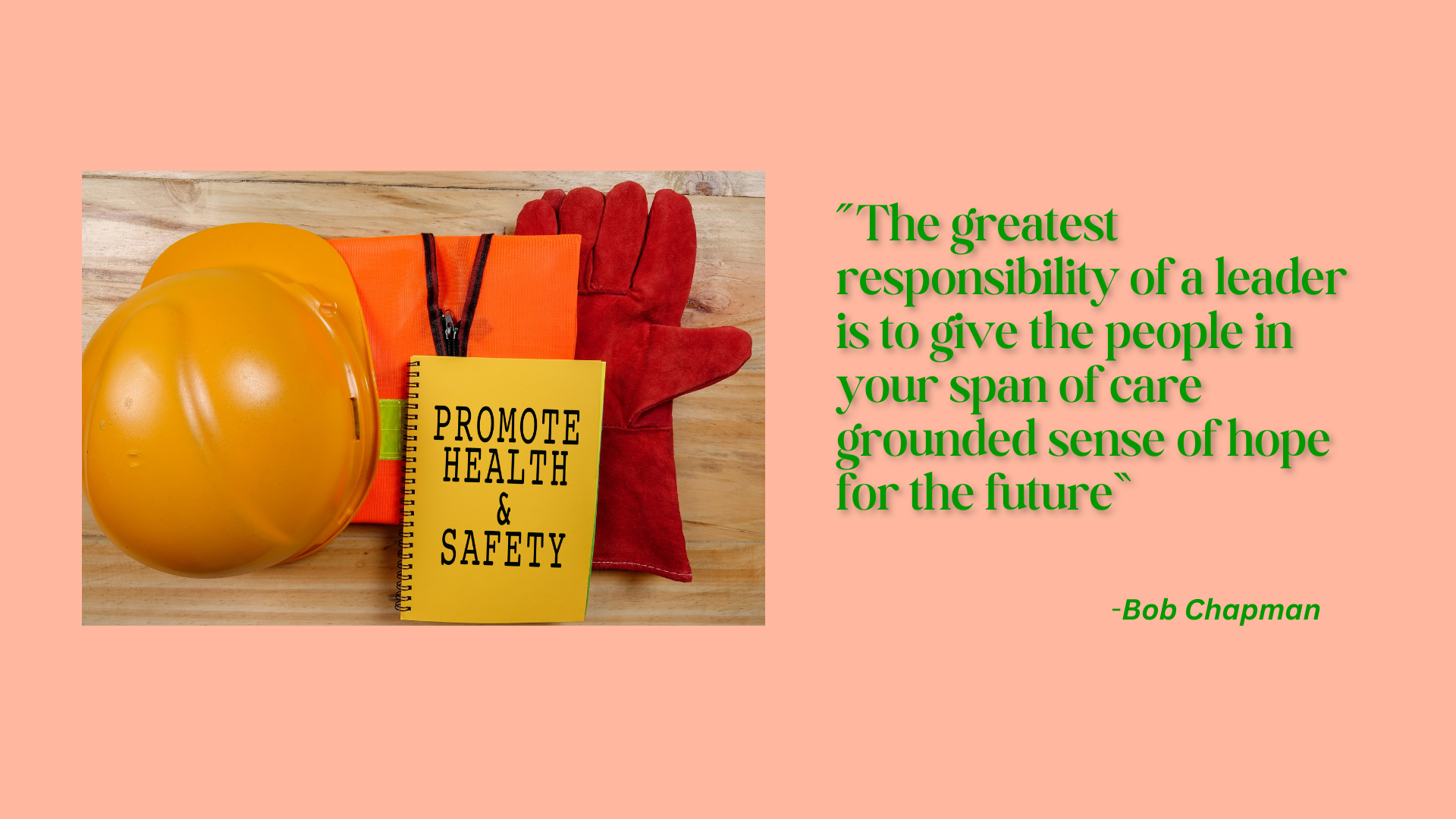A paycheck isn’t the only consideration a potential employee considers when choosing whether to work for a given organization. They also consider several other factors when determining their long-term fit.
Among the various benefits a company offers its employees, workplace safety and employee health benefits take top priority. But how does a well-implemented safety and health program affect employee retention?
Studies show that 73% of employees surveyed said they want to know about a company’s health and safety program before accepting a job offer. Therefore, organizations must develop and implement a well-designed program that prioritizes employee well-being, thereby attracting and retaining top talent.
In this post, we will explore the importance of an organization's robust and well-implemented health and safety program, with employee well-being as its top priority.
Key Takeaways
- Employees are a company's most important asset, and safeguarding their interests and well-being must be the top priority. Ensuring a safe working environment free from hazards and promoting a healthy work-life balance is a necessity for employees.
- This post will help you understand the various aspects of safety and health for employees at work and how they affect employees’ long-term retention.
What is a Safety and Health Program?
In simple terms, safety and health programs are designed to safeguard employees from workplace risks and hazards, both physically and mentally.
After the COVID-19 pandemic, workplace safety concerns increased. This marked a significant turning point for many organizations, enabling them to promote remote work more than ever.
A post-pandemic work safety survey reveals that workplace injuries and safety hazards result in significant financial losses for companies, including lost productive working days and emotional trauma for employees.
Once things started to settle down, bringing employees back to the workplace became challenging and remains a bottleneck for many leaders. Companies had to reassure employees that working offline would not compromise their health.
Some of the common features of a well-implemented health and safety program include:
- Regular fire drills and fire safety equipment
- In-house/partnered medical practitioners and therapists
- Recreational zones for mental wellness and rejuvenation
- Office buildings are safe from natural hazards like floods and gales
- Regular safety checks of office equipment and electrical fittings
- Quality and hygiene tests of food served in the cafeteria
- Clean and well-maintained sanitation facilities, and many more
Safety can also have specific aspects for certain employees. For instance, new mothers returning to work can expect isolated spaces for nursing, pumping, or taking a quick nap.
Here is where a company's HR team needs to survey and analyze the different safety requirements and expectations of all employees.
What Makes a Strong Safety and Health Program?
Planning and promoting workplace safety initiatives is not the job of any one person or department in the company. To create a safe and peaceful workplace, all stakeholders must be involved.
Let us examine some of the non-negotiable components that contribute to your company's robust safety and health program.

1. Visible Management Leadership
Employees expect their leaders and managers to see them and hear their concerns and feedback. A company where the leaders visibly show empathy and care towards employees has employees who feel safe and secure to work there.
Leaders must demonstrate unwavering support and commitment to implementing current health and safety initiatives with the latest trends and employee requirements. The rest of the employees follow the examples set by leaders when they promote and follow safety and wellness protocols while working in the company.
2. Employee Involvement and Ownership
Workplace safety success relies on the coordinated efforts of all employees, leaders, and the company's support staff. Participating in and following safety and health initiatives is a form of employee engagement.
For instance, participating in mock fire drills helps employees connect with their team members and floor coordinators to plan for mitigation and escape routes. Similarly, participating in wellness programs and activities to improve team bonding makes employees feel secure and gives them a sense of belonging in a safe workplace.
3. Hazard Identification and Risk Assessment
Preparedness and proactive planning are crucial components of a strong safety and health program. Understanding workplace hazards that cause anxiety among employees and implementing initiatives based on employee feedback helps employees stay in the company longer, reducing the likelihood of them considering a switch.
Companies must assess their current employees to understand their health and safety concerns to prevent such situations. They must do their best to retain top talent through engagement and retention initiatives.
4. Prevention and Control Measures
Vigilance in avoiding safety hazards is a key step in ensuring employee safety within a company. So, in addition to disaster management and preparedness, all employees and company management must be aware of ways to prevent safety hazards.
For example, workplaces must have isolated smoking zones so that staircases, restrooms, cafes, and other common areas with high employee footfall remain safe from fire hazards.
Additionally, creating separate commute zones for employees with physical disabilities can prevent them from getting caught in crowds during rush hours and causing accidents.
5. Ongoing Education and Training
Safety and wellness are shared responsibilities. Therefore, it is essential for all employees to be aware of the significance of workplace safety and to spread awareness to those who are unaware of it.
All company employees and support staff, such as housekeeping professionals, security personnel, and others, must understand the company’s safety policies and the impact of any safety breach. Similarly, all new employees who join the company must attend mandatory training sessions on safety and wellness during their onboarding sessions.
Additionally, employees must periodically take part in surveys and quizzes sent by management to test their knowledge of health and safety awareness within the company.
6. Continuous Evaluation and Improvement
Safety and health initiatives must include periodic review and revision to ensure they are relevant and useful for all company employees. For instance, when a company sees several new mothers returning to work and struggling to balance their work and baby duties, it can revise its existing maternity policies by including remote work, extending leaves, and so on.
For such reasons, companies must collect employee feedback for different initiatives and understand their satisfaction with workplace safety and health measures. Having a common portal for employees to discuss topics related to safety and health is a great way to measure employee pulse.
7. Inclusion of Contractors and Temporary Staff
Contractors and support staff, such as housekeeping professionals, office assistants, helpdesk employees, building security officers, support technicians, and many others, may not directly contribute to a company’s business. However, such professionals motivate the company’s employees to be more productive and focus solely on their work tasks.
Therefore, it is important to include these support staff in the company’s safety and wellness programs and provide the same benefits that are given to its employees. For example, support staff must also have access to the free food provided by the company to show that all are one and everyone’s work efforts are valued.

Unlock AI-Powered Hiring Analytics
Transform the way you hire with insights that create aligned, collaborative, and high-performing teams.
 Smarter Hiring Decisions
Smarter Hiring Decisions
 Reduce Expensive Turnover
Reduce Expensive Turnover
 AI-Driven Insights
AI-Driven Insights
 Optimize Team Performance
Optimize Team Performance

How Do Health and Safety Programs Affect Employees?
Employee wellness and safety programs are among the major initiatives to improve employee retention. Such programs are a great way to engage employees through shared goals since safety impacts all employees.
Here are some of the advantages employees get with a well-implemented safety and health program:
1. Physical Safety and Injury Reduction
Who would want to come to an office that hardly follows basic safety protocols? Anyone would be understandably anxious and stressed working in an office prone to electrical problems or pest infestations.
On the contrary, a company that is well-prepared with risk management plans and provides well-targeted recreational initiatives becomes a place where employees wish to come to work.
A safe workplace lures employees to come to work while attracting top industry talent. Ergonomic work setups with sufficient recreational and rejuvenation facilities demonstrate that companies prioritize employees’ physical and mental well-being while working for them.

2. Mental and Emotional Well-Being
Employee safety is not restricted to protection from workplace accidents and calamities. Mental wellness is an equally crucial aspect of employee safety that is majorly determined by the type of work and workload of the employee.
More and more companies are focusing on providing an optimal work-life balance for their employees. Additionally, many companies have begun promoting flexible work hours and remote work arrangements since the COVID-19 pandemic. Results from several studies on remote work indicate a significant increase in productivity while maintaining employee safety and satisfaction.
With reduced stress, employees feel more peaceful and are more likely to engage with their coworkers, leading to increased active engagement and productivity.
3. Empowerment and Confidence
When employees feel safe at work, they tend to be happier. That good attitude is pervasive and leads to active employee engagement, creating a positive work environment. This overall attitude boost improves the confidence of employees that they can remain productive in a workplace that safeguards them to the maximum.
Companies that promote their employees' physical and mental well-being are often recognized as the best places to work. Safety and health initiatives empower employees and encourage others to join the company.
4. Trust in Leadership
Companies prioritizing employee safety saw fewer turnovers, especially during pandemics like COVID-19. In such cases, companies must have adaptive safety programs to mitigate unforeseen hazards without compromising their primary work ethics and goals.
Such adaptiveness fosters trust and confidence among employees, helping them develop a deeper bond with their employers. Deloitte research on workplace well-being found that leaders who empathize with employee wellness and safety create more value for the employees they work with.
5. Belonging and Inclusion
Many companies are increasingly hiring candidates from diverse backgrounds, indicating that talent will be valued irrespective of ethnicity, language, gender, and other factors. Providing a uniform and comprehensive safety and health program is important to ensure that all employees feel included in the company.
For instance, safety evacuation measures ensure all employees are treated fairly. No employee gets special privileges or additional benefits. This uniformity ensures that no employee feels they do not belong in the company or that the company has more employees from certain backgrounds.
6. Job Satisfaction and Commitment
Beyond just a paycheck, employees look for strong reasons to work for an organization. Companies that prioritize health and safety as part of their culture and basic ethics have been lauded and preferred by employees worldwide. This was particularly evident during the pandemic, when such companies quickly switched to remote work, created remote recreational activities, and more.
Naturally, employees of such companies remain committed to their employers because their basic safety needs are met. The more swiftly companies meet employees' specific concerns, the more satisfied employees feel in these companies. Satisfied employees think less about switching jobs or careers.
So, How Does a Well-Implemented Safety and Health Program Affect Employee Retention?

A well-implemented safety and health program is a win-win for employees and the company. For employees, it adds to their paychecks. For employers, it has a positive impact on employee retention.
Let’s look at some surprising benefits employers achieve with a robust safety and health program for employees.
1. Lower Turnover Rates
When employees see companies prioritizing their safety and wellness, they are more willing and enthusiastic about performing their assigned tasks. With no additional stress or anxiety related to unforeseen calamities or safety risks, they use their valuable time at the workplace to work with their team, collaborate with others, and actively engage in progressive topics.
Such a positive work culture across teams leads to high employee satisfaction and lower turnover rates. Naturally, employers do not need to spend time and resources frequently hiring for the same roles and responsibilities.
2. Stronger Employer Brand
A company's employees represent its brand values. An employee’s experience and satisfaction at his/her workplace become important quality metrics in determining the organization's reputation and ethics.
Companies that prioritize their employees' safety and well-being are perceived to deliver high-quality goods and services. Customers consider such employee experiences when buying or using a brand’s products and services.
History shows that the most preferred customer brands value their employees as their primary resources from the outset. Any employee dissatisfaction or sudden turnover can lead to a decline in a company’s stock or brand value in the market. Only those companies that have rectified such employee concerns and prioritized their safety and health have made it back.
3. Improved Morale and Engagement
Employee engagement is about making employees feel valued for their work. Any employee engagement initiative must have one primary goal: to promote employee wellness and enhance employee satisfaction.
A well-crafted safety and health program promotes a sense of fulfillment for employees and assures a safe tenure for anyone entering the team/company. Adherence to mandatory safety and wellness requirements demonstrates that the company values its employees. Such initiatives make employees feel less anxious about their future in the company and boost their morale to strive better for the company.
4. Increased Productivity and Efficiency
Proper safety and wellness initiatives ensure that employees worry less and remain relaxed, knowing that the company is there to support them in times of emergency. Consequently, employees can focus more on their work than on anticipating unforeseen circumstances.
This overall employee satisfaction, combined with an increased focus on work goals, improves the productivity of employees, teams, groups, and, ultimately, the organization. Also, employees can engage in meaningful initiatives rather than discussing potential safety threats, making their collaborations more efficient and productive.
In creased productivity can gradually increase companies' performance and profits from their sales and services.
5. Long-Term Cost Savings
Similar to what we have seen in our earlier discussions, a well-established and adaptive safety and health program can ensure:
- Lower hiring costs due to reduced employee turnover.
- No compulsion to face lawsuits and legal concerns over employee safety.
- Lower compensation and insurance costs due to risk avoidance measures.
- High employee engagement with reduced anxiety and stress.
Having an emergency contingency plan and sufficient funds allocated for it helps companies ensure long-term financial stability. Such a robust safety and health plan prevents sudden or unexpected financial losses that can affect a company’s reputation and profits.
Final Thoughts

Companies that consistently develop innovative ideas to prioritize employee well-being and offer state-of-the-art, safe workplace facilities have always been sought-after destinations for job candidates seeking better opportunities.
A well-implemented safety and health program is a key initiative to ensure long-term employee retention. Such programs are also healthy employee engagement initiatives, where employees can volunteer and participate in the company's health and wellness programs.
For employees, such safety and wellness initiatives are a bonus and motivation to come to work every day. Employees can focus on their work and collaborate with their teams without worrying about unexpected hazards.
A robust and well-planned risk management plan can prevent huge financial losses and employee turnover for employers. Risk planning and adaptability enable companies to face unforeseen circumstances without undue stress or damage.
Revaluate180 is a leading data-driven solution that provides accurate insights for individual and organizational development. Our programs are carefully curated with the health and well-being of employees and leaders in mind, from their onboarding to their transition into their respective teams.
Contact us to learn more about our initiatives for individual and organization-wide long-term growth and retention.

Unlock AI-Powered Hiring Analytics
Transform the way you hire with insights that create aligned, collaborative, and high-performing teams.
 Smarter Hiring Decisions
Smarter Hiring Decisions
 Reduce Expensive Turnover
Reduce Expensive Turnover
 AI-Driven Insights
AI-Driven Insights
 Optimize Team Performance
Optimize Team Performance

FAQs
1. How does a well-implemented safety and health program affect employee retention?
Companies that provide comprehensive programs and initiatives aimed at safeguarding employees' physical safety and mental well-being often see greater employee satisfaction and increased work commitment. Such employees do not find reasons to leave the company, leading to overall improvement in employee retention.
2. How does workplace safety contribute to employee retention?
Safety at the workplace covers protection from workplace accidents and hazards while also promoting a positive work environment where employees do not feel stressed and overloaded. Feeling safe and secure at work helps employees focus on productive tasks rather than feeling anxious at work.
Anxiety in the workplace is a common reason for employee turnover and switching companies, which can be addressed with a comprehensive safety and health program.
3. What are the benefits of implementing an effective safety and health program?
Here are some of the benefits companies get when implementing a comprehensive safety and health program:
- Lower turnover rates
- Stronger employer brand image
- Improved morale and employee satisfaction
- Increased productivity and work efficiency
- Reduced disaster or accident management costs
- Long-term cost savings through employee retention
4. How does safety compliance contribute to improving employee retention and reducing turnover rates?
Every employee union or labor committee has policies relating to employee safety and wellness. Companies must adhere to their regional or country-specific labor laws and regulations.
When employees find companies that strictly adhere to safety and security policies, they gain trust and are assured of a secure career. Moreover, when company leaders understand employee safety concerns and take action to address them, employees feel heard and a sense of belonging, which significantly reduces turnover rates.
5. What are the factors that affect employee retention?
Here are some crucial factors that companies must focus on to retain their employees for the long term:
- Provide the right compensation and benefits for their job role as per industry standards.
- Creating a workplace culture that helps employees learn and grow.
- Prioritize workplace safety and provide sufficient recreational and rejuvenation facilities.
- Provide several feedback channels for employees to share their concerns and get the right course of action.
- Hire the right person for the right job role to prevent abrupt employee turnover.
- Encourage employees to balance their work and personal lives by providing and tracking their work hours and deliverables.
- Train your managers and leaders to listen to their subordinates and resolve conflicts amicably.
6. How do training programs affect employee retention?
Training programs and workshops, offered during onboarding and other instances, help employees remember the policies and compliance requirements they must adhere to during their tenure with the company. Special training sessions on workplace safety, harassment, embezzlement, and POSH (Prevention of Sexual Harassment) help employees become aware of their fundamental rights, how to address such challenges, and whom to approach for help.
Such awareness fosters a sense of safety among employees, thereby reducing anxiety and enhancing their confidence and trust in their current workplace.
